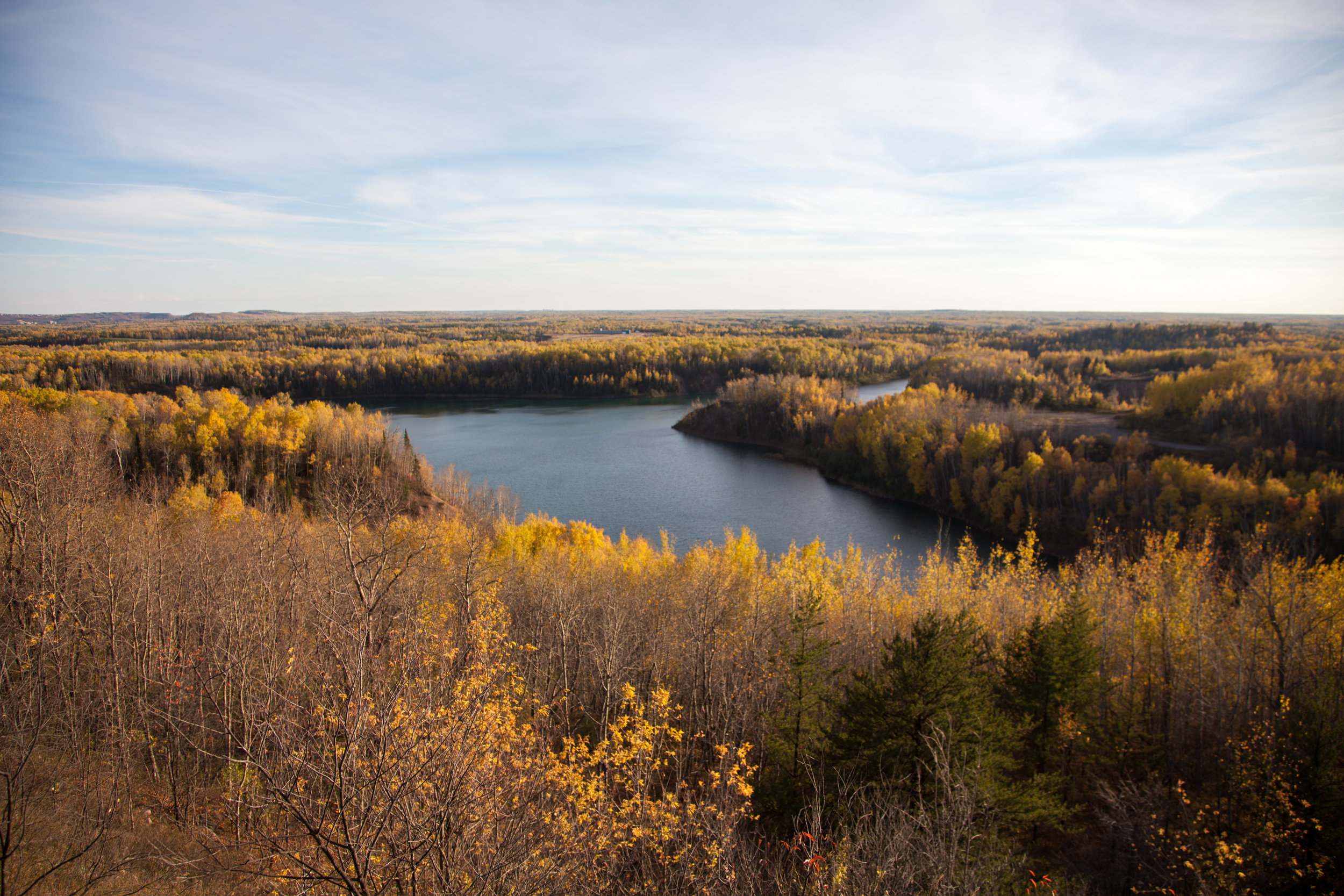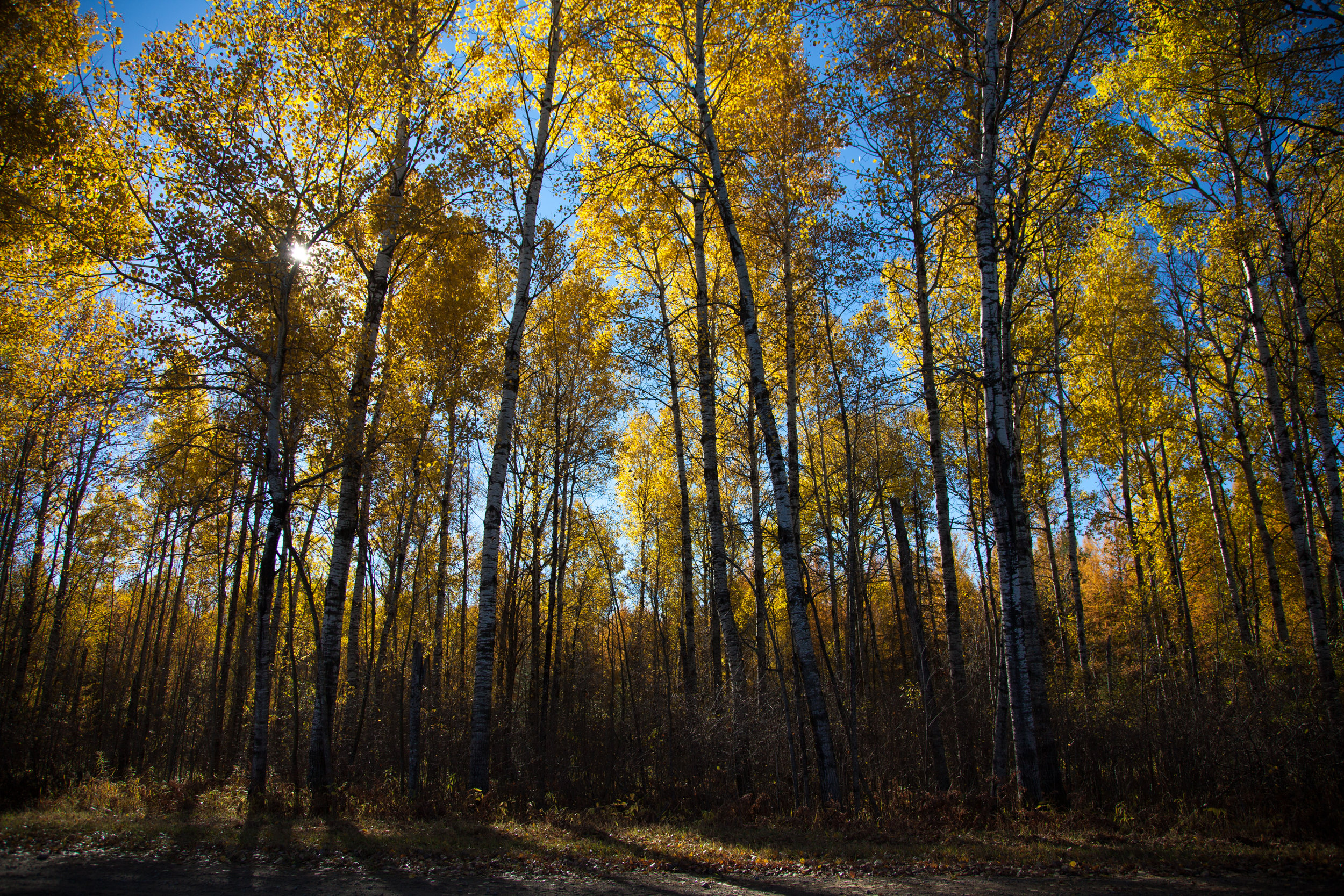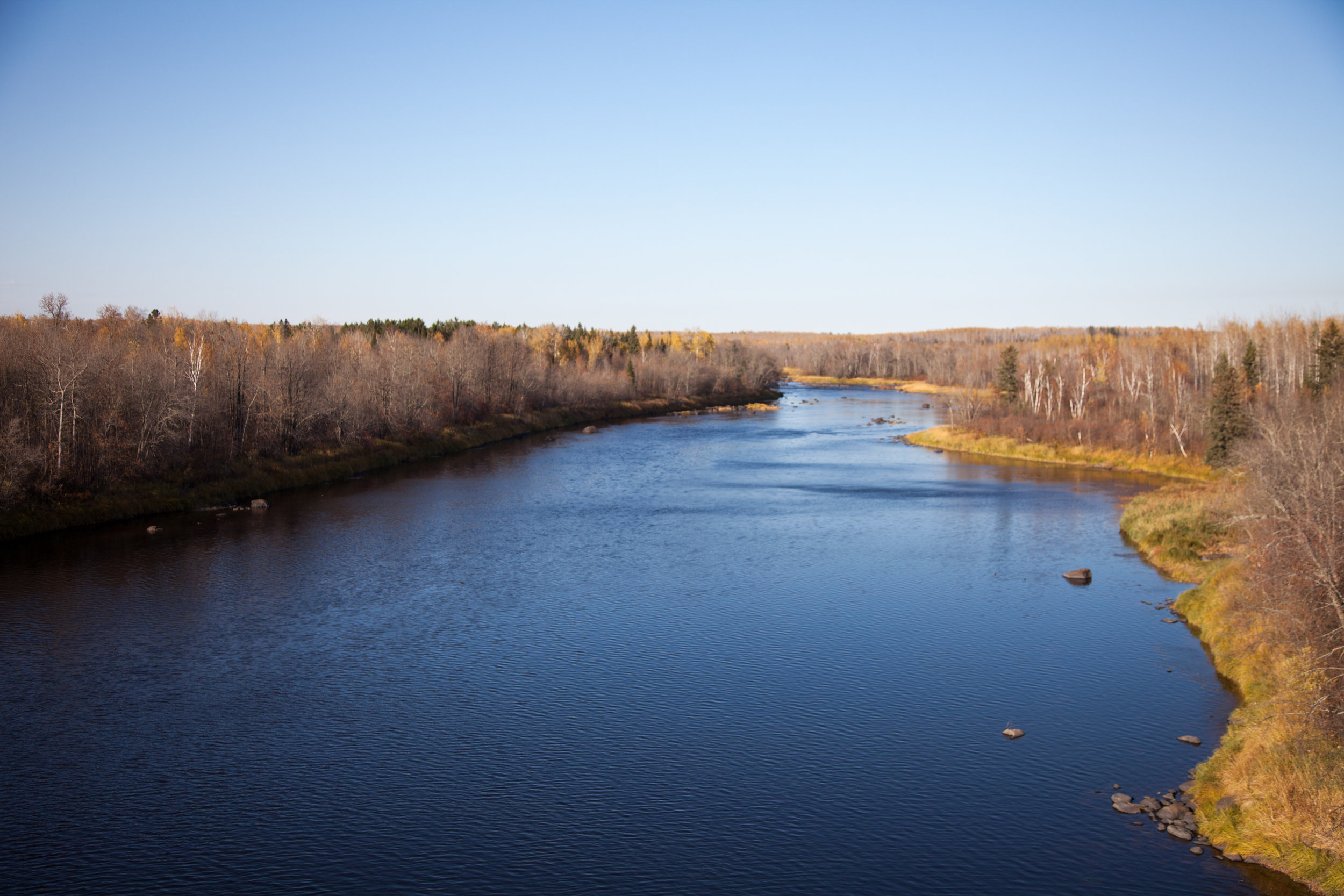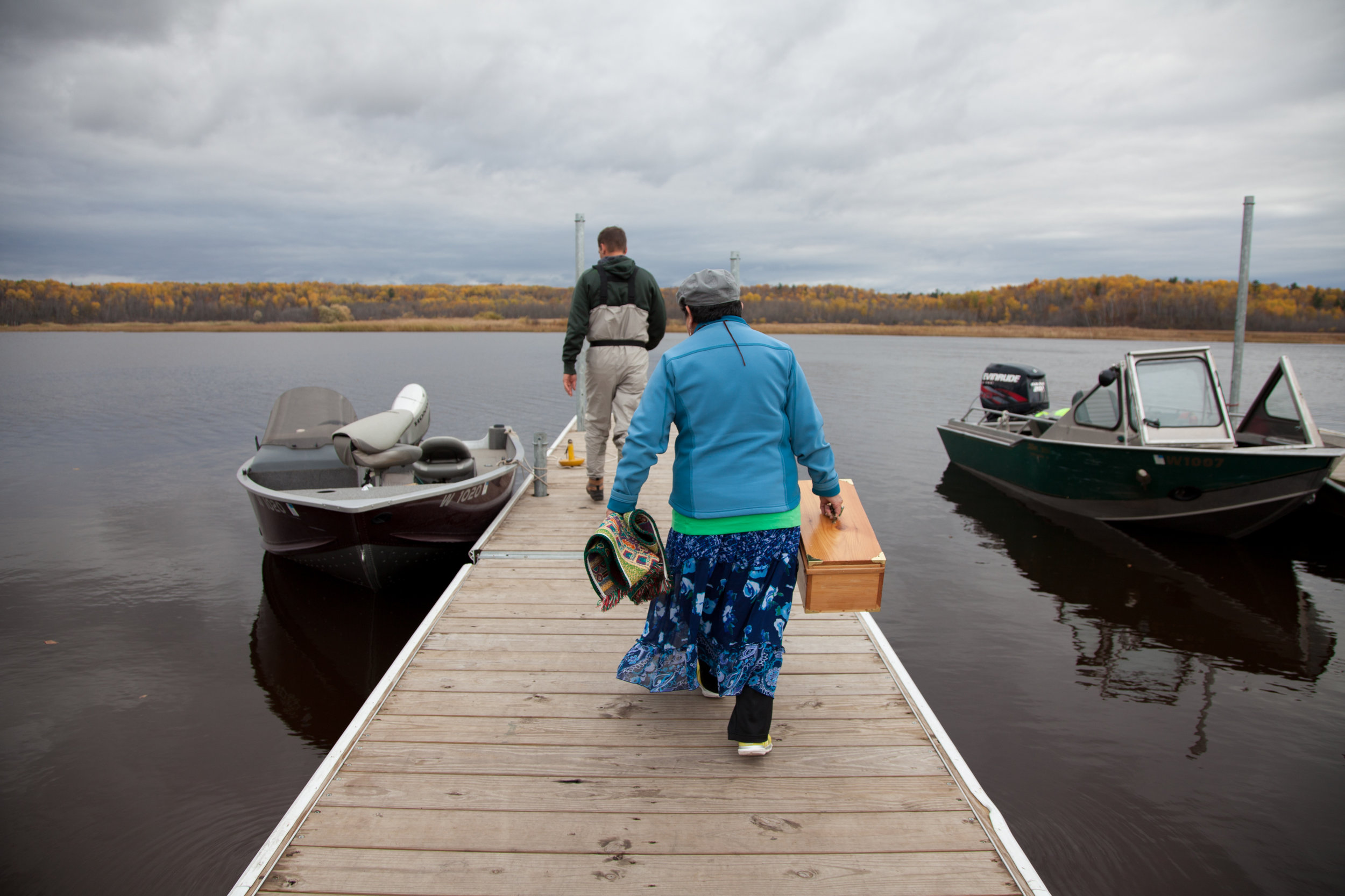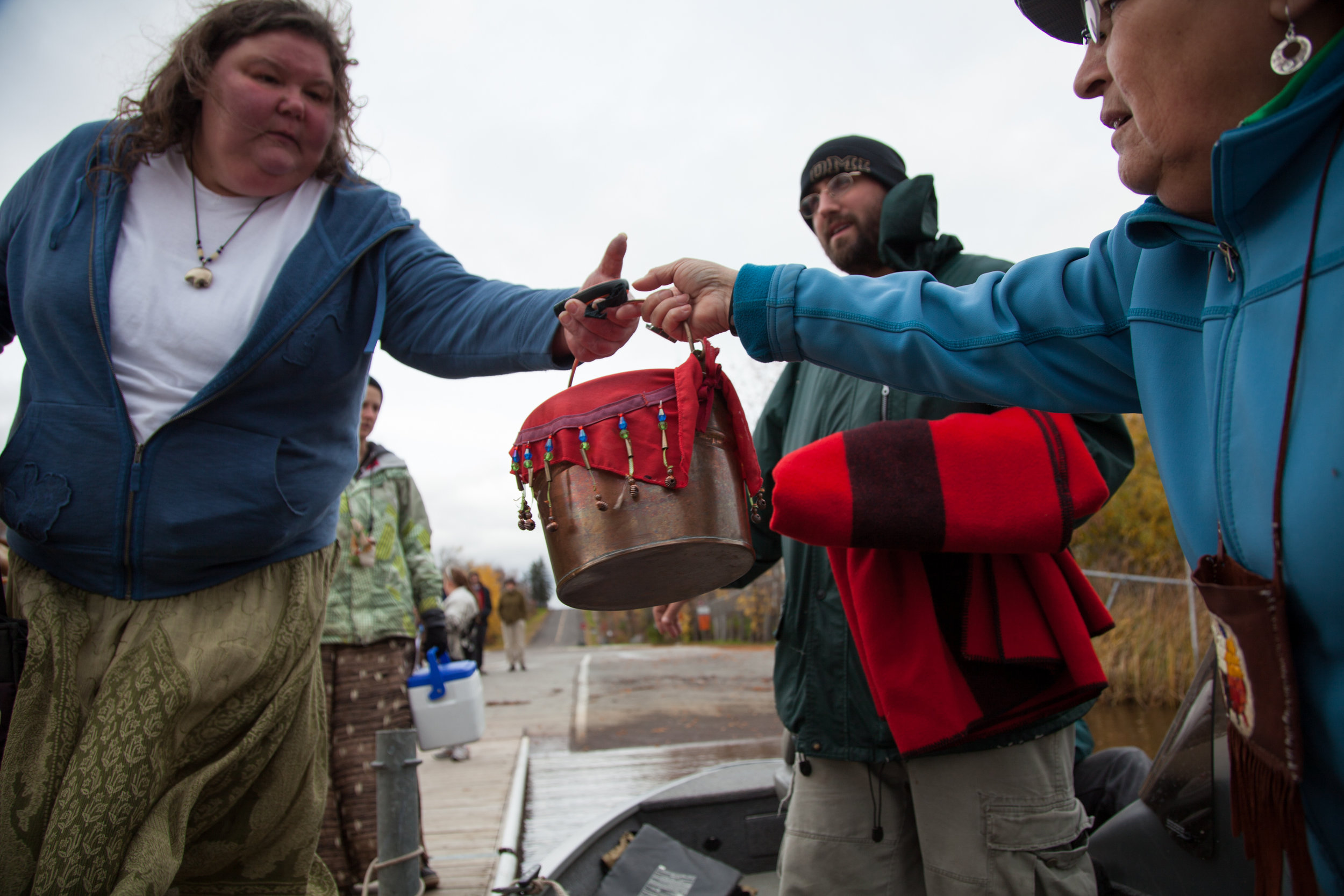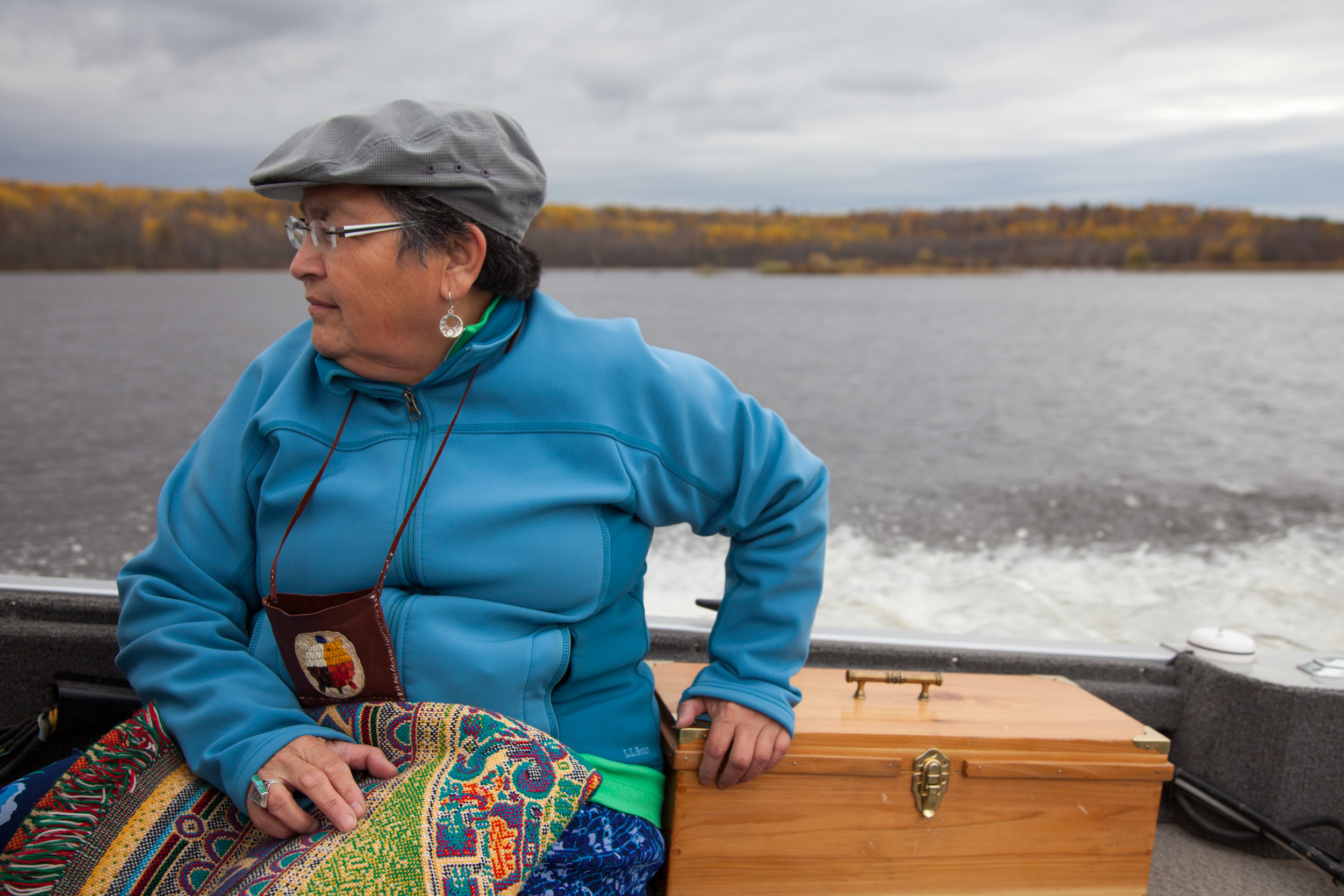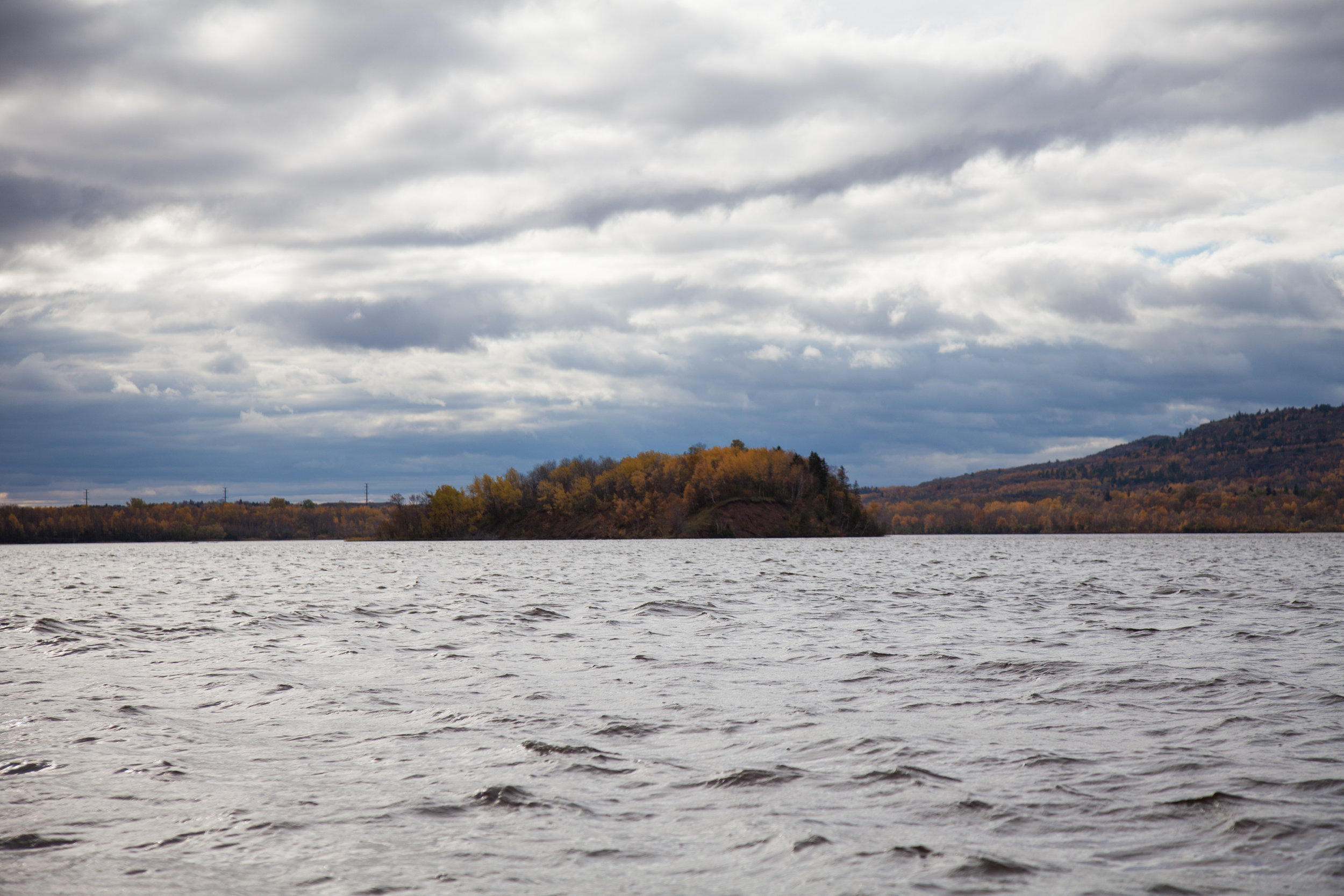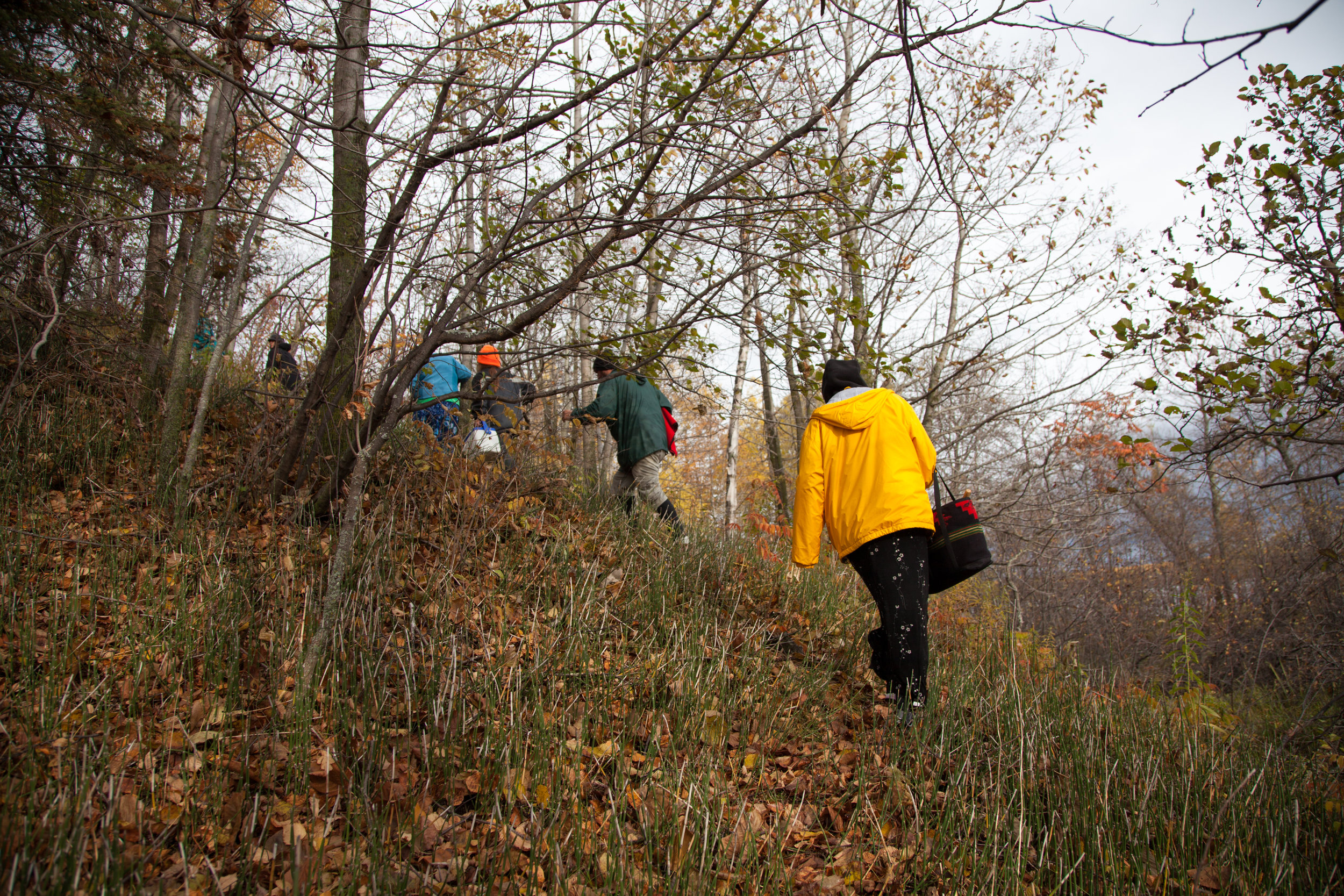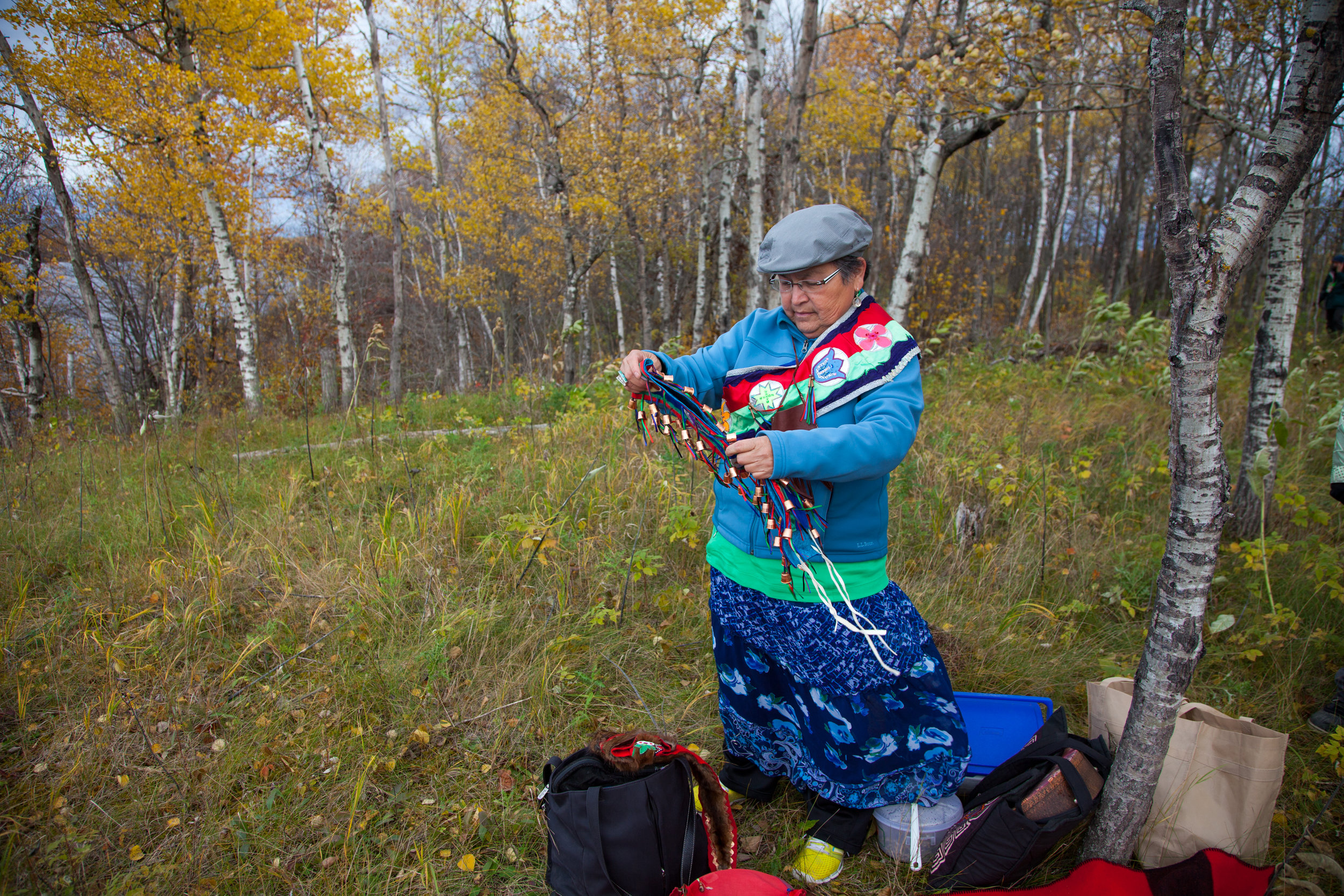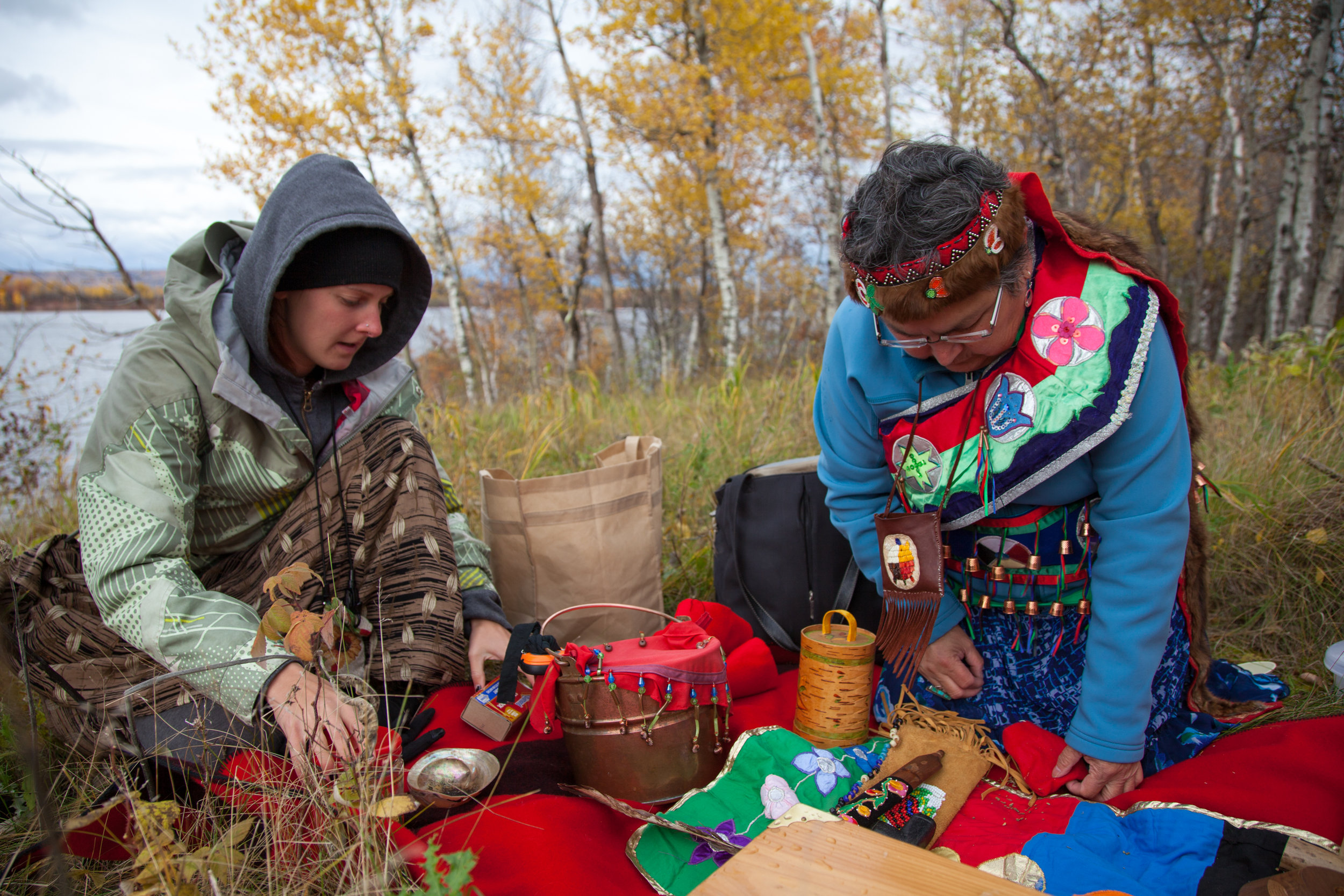The set of images below were captured in northern Minnesota. I was invited to attend the Nibi “Water” Walk along the St. Louis River by Sharon Day. Sharon is an Ojibwe elder and a Midewin which means her spiritual practice is to care for the water. Sharon also works for the Indigenous Peoples Task Force which is an awesome organization that sponsored my trip to Minnesota to document the walk.
The water walks are meant to not only spread awareness about issues relating to water but to honor and pray for the spirit of the water. The St. Louis River starts 13 miles east of Hoyt Lakes, Minnesota and flows into Lake Superior which is considered the largest freshwater lake in the world. In 1987 the St. Louis river was listed as an “Area of Concern” by the Great Lakes Water Quality Agreement. Public records state that advisories have been issued due to the presence of mercury and polychlorinated biphenyls that exceed the standards established in the agreement. Northern Minnesota has a long history of mining. If you take a moment to look at an aerial photo on google maps of Hoyt Lakes, Minnesota (and zoom out) you can see the vast open-pit iron ore mines. According to USGS approximately two thirds of the steel made in America originates as taconite from mines in Minnesota.
There is currently a proposal from PolyMet Mining Corporation to build a sulfide mine called the NorthMet Project. The mine would be located between Babbitt and Hoyt Lakes, Minnesota. The site is located on public land in the Superior National Forest and is near the Embarrass and Partridge Rivers, which subsequently flows into the St. Louis River…. and into Lake Superior which supplies millions of people with drinking water.
The proposal is to develop an open-pit mine to extract copper, nickel and other metals. Sulfide mining is different from the traditional mining that has taken place in northern Minnesota because sulfuric acid is produced when rain falls on sulfide ore waste. The sulfide waste will need to be managed and treated for hundreds of years. It is very hazardous to the environment and to public health. Acid mine drainage is currently a huge problem in places like Pennsylvania and my current home state of West Virginia due to the vast amount of mining that has taken place. Currently, the Minnesota Department of Natural Resources, U.S. Forest Service, and Army Corps of Engineers are viewing public comments about the proposal.
The proposed mine is a very large environmental and public health topic throughout the state, and it was also a fundamental narrative of the St. Louis water walk. During the walk we passed numerous large mining sites. Several trains filled with taconite rolled by us and disappeared into the horizon. In the small mining town of Towers a large welcoming banner hung over head stating, “We Support Mining.” The same slogan could be seen around town on posters that hung outside stores and restaurants. I met a young native girl the first night I arrived in northern Minnesota who said she barely sees her father because he gets home late and leaves very early to go to work in the mines. The story is complicated and there are a lot of different lenses to see it through. I am currently working on trying to go back to spend more time in northern Minnesota to capture more interviews and produce a larger film about the topic.
At the beginning of the journey we walked through Superior National Forest. It was an incredibly beautiful and peaceful experience. The tamarack trees were a bright yellow and the sky seemed so incredibly blue. The walk started on rural dirt roads that slowly grew into large paved streets and highways as we continued to get closer to Duluth. The road gradually became smaller again as we entered Jay Cooke state park and continued through the park to a boat dock. From there we took a boat onto Spirit Island. The sacred island was a stopping place in the migration of the Anishinaabe people from the northeastern part of the continent. It was here that the ceremony ended and the water was released back into the river.
A short film about the journey will be available online in the next few weeks.

